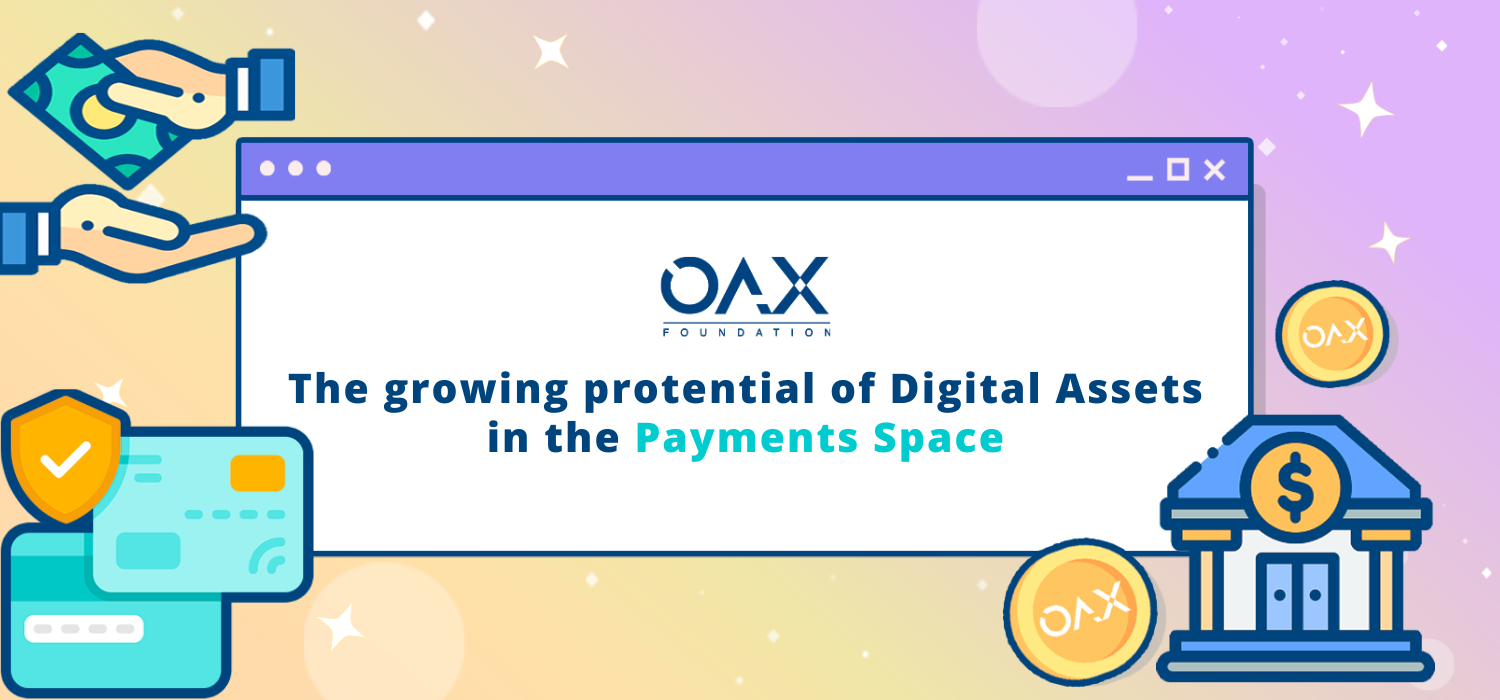
Paying it forward: a new driver of crypto adoption
In the fast-evolving landscape of digital assets, the quest for the payment methods of the future has been a topic of intense discussion. Last year, we delved into the concept of practical use cases of digital assets and specifically explored Solana Pay - how its low fees and fast transactions could change the way of international commerce. At OAX, we remain committed to identifying industry drivers that defy the status quo and propel digital assets into the hands of a broader audience. Now, as we reflect on the progress made and the challenges encountered, it is worth examining where we stand in our pursuit of accessible and practical everyday use of digital assets.
Blockchains are increasingly commercialised for the security, traceability and automation advantages they offer; tokenisation is widely accepted as a legitimate enabler of blockchain services. And all the while, adoption has been growing. Crypto.com’s Crypto Market Sizing report showed that ownership had reached 425 million by the end of 2022, while crypto market cap soared beyond US$1 trillion by August this year. By 2030, the compound annual growth rate (CAGR) of the global crypto market is predicted to be 12.5%. Looking at Ethereum alone, there are well over a million transactions each day.

The direction of travel is undeniably strong and the long-held conviction that these technologies can transform financial services is beginning to be realised. The value proposition of various forms of DeFi products and services is compelling, and few doubt that consumers will respond positively to their attractions.
Yet while mass adoption seems to be inevitable – a case of ‘when’, not ‘if’ – the specific enablers of this step-change are still subject to some uncertainty. We have long anticipated that institutional adoption of cryptoassets as an investment class will provide enough scale and liquidity to break through to the mainstream, and this has started to happen: by April this year, according to KPMG, regulated investments in crypto reached US$ 18 billion, while public companies held US$ 3 billion in BTC.
While Web3.0 continues to work itself forward, tackling many of the challenges associated with decentralisation of the infrastructure behind the platforms we use every day, some developers and investors are adopting a wait-and-see stance. Yet purpose-driven layer 2 chains are sparking interest for their ability to provide the scale and resilience Web3.0 applications will require.
But alongside institutional adoption and consumer interest, another trend is emerging which suggests an additional route to wider adoption. This trend is happening in the payments space.

We have previously shown how WeChat Pay extended the ability of China’s largest social media platform to deliver products and services to consumers where they lived online. Enabling seamless purchases without requiring separate payment applications and accounts supercharged both WeChat’s growth and the overall online marketplace in China.
Recently, a rapid series of cooperative arrangements have raised the possibility of further payments-driven adoption. Consider PayPal’s announcement in early August that it has launched its own stablecoin, PayPal USD. Issued by Paxos Trust Company, the stablecoin is redeemable 1:1 with USD and enables PayPal customers in the US to use the digital currency to fund purchases, transfer PayPal funds between their accounts and compatible wallets, and remit payments to participating individuals.

Also in August, Solana Labs’ decentralised payment protocol, Solana Pay, successfully incorporated its plugin into the Shopify ecosystem, enabling countless businesses operating on the platform to use it as a payment option. The plugin uses USDC, the second-largest US dollar stablecoin, to enable the payments, lending price stability, cost efficiency and transparency to the process.
And in September, tourists using China’s e-CNY app, which employs the country’s pilot CBDC, gained the ability to charge their digital yuan wallets from their Visa or Mastercard accounts. The upgrade coincided with the start of the Asian Games in Hangzhou, suggesting that China is taking steps to make the digital yuan available for all types of retail payments, aiming to establish it as a widely used payment solution for transactions between consumers and businesses in the country.
On an institutional level, Ripple has been providing a real-time gross settlement system (RTGS), currency exchange, and remittance network for several years. RippleNet provides a global network of financial institutions that use the Ripple technology for efficient cross-border payments using its digital currency XRP for transactions and blockchain technology to record and confirm transfers, providing transparency and security in the payment process.
Just as with WeChat Pay, bringing crypto-enabled utility to where consumers and businesses can make use of its inherent security and flexibility for everyday transactions, provides transactors with a cast-iron reason to use the technology – and to use it without needing to be convinced. The use case is embedded and all they need to do is keep accessing online services and paying for them for adoption to soar.
Like many innovations in the crypto space, creating payment facilities based on decentralised tech requires cooperation between numerous organisations and a network of committed stakeholders. OAX foundation was pleased to be participating in the conversation along with industry leaders in Hong Kong FinTech week, seeing concepts being put into action such as the introduction of e-HKD and cross-border payments. We’re beginning to witness not just concepts but actual payment implementations that relate with us on a daily basis, demonstrating a strong signal of possible breakout for digital assets adoption in our new economy.


